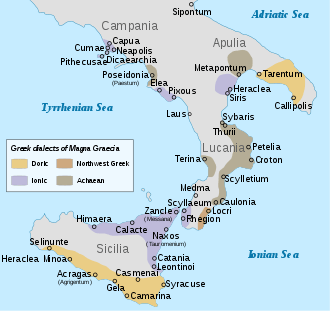Xyston
The xyston (Ancient Greek: ξυστόν "spear, javelin; pointed or spiked stick, goad (lit. 'shaved')", a derivative of the verb ξύω "scrape, shave", was a type of a long thrusting spear in ancient Greece. It measured about 3.5–4.25 meters (11.5–13.9 ft) long and was probably held by the cavalryman with both hands, although the depiction of Alexander the Great's xyston on the Alexander Mosaic in Pompeii (see figure), suggests that it could also be used single handed. It had a wooden shaft and a spear-point at both ends. Possible reasons for the secondary spear-tip were that it acted partly as a counterweight and also served as a backup in case the xyston was broken in action. The xyston is usually mentioned in context with the hetairoi (ἑταῖροι), the cavalry forces of ancient Macedon. After Alexander the Great's death, the hetairoi were named xystophoroi (ξυστοφόροι, "spear-bearers") because of their use of the xyston lance. In his Greek-written Bellum Judaicum, the Jewish historian Flavius Josephus uses the term xyston to describe the Roman throwing javelin, the pilum.

The xyston was wielded either underarm or overarm, presumably as a matter of personal preference. It was also known, especially later, as the kontos; meaning literally "barge-pole"; the name possibly originated as a slang term for the weapon.
See also
- Ancient Macedonian military
- Companion cavalry
- Dory (spear)
- Hellenistic armies
- Kontos
- Pole weapon
- Sarissa
References
- LSJ - ξυστόν from verbal adjective ξυστός, which is in turn derived from the verb ξύω (shave, scrape).
- ξύω
- ξυστός
